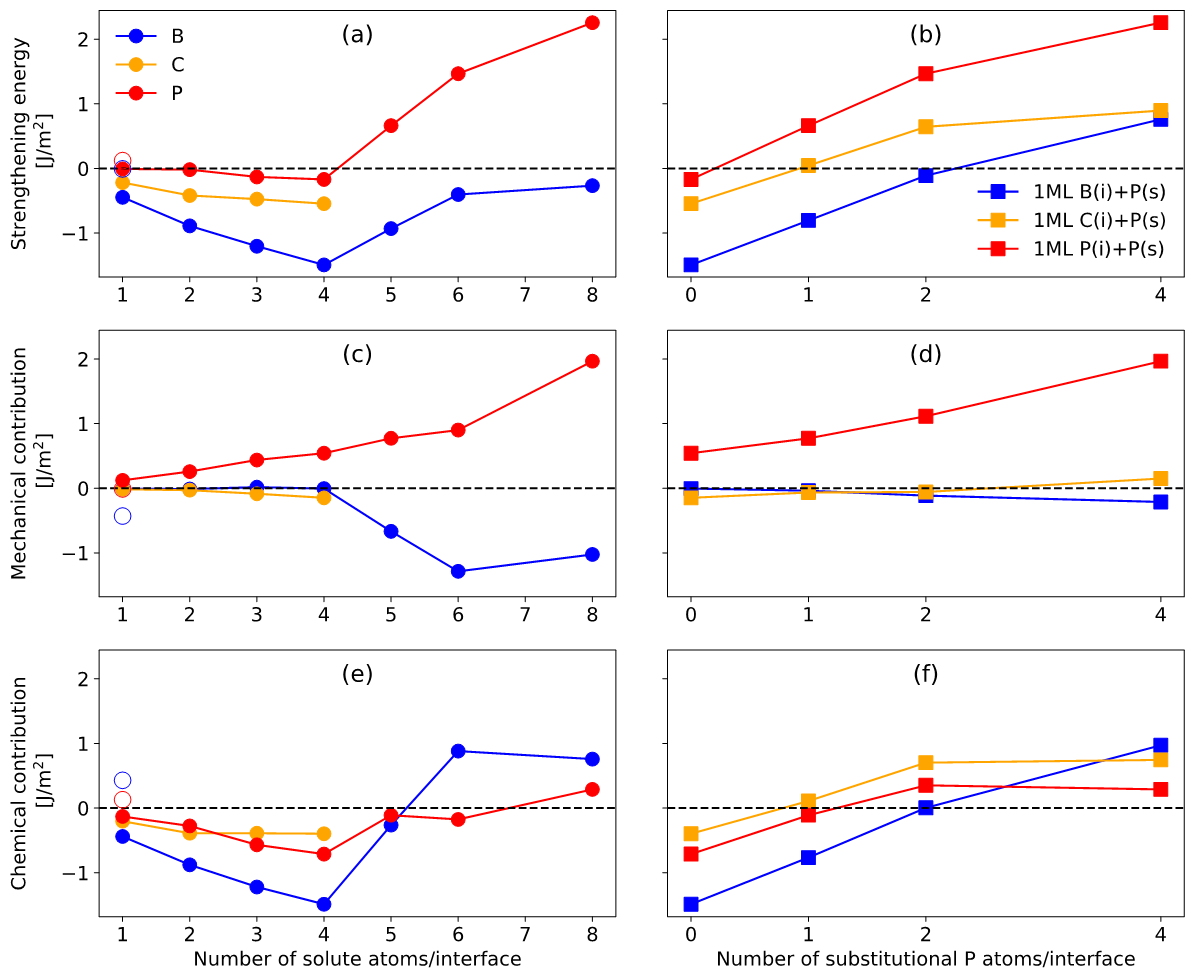
《Acta Materialia》reveals the mechanism of phosphorus induced grain boundary embrittlement and carbon and boron alleviating embrittlement
For a long time, the segregation of phosphorus at grain boundaries leading to embrittlement of steel materials has been a recognized problem. Research has shown that adding boron or carbon elements can alleviate phosphorus induced grain boundary embrittlement, but its mechanism is still unclear. Some scholars believe that this is due to the grain boundary strengthening ability of carbon and boron elements themselves, while others believe that this is due to the reduction of phosphorus segregation by carbon and boron. For the second viewpoint, two possible mechanisms have been proposed in the literature. One is that boron and carbon compete for the segregation position with phosphorus, and the other is that boron and carbon have a repulsive effect on phosphorus, leading to a decrease in phosphorus segregation. However, it is difficult to prove through experimental means which mechanism is at work.
The Marine Engineering Steel Team conducted research on this issue using first-principles calculations. This study is based on the Rice-Wang model and compares the effects of phosphorus, boron, and carbon elements on grain boundary cohesion, both individually and collectively, and calculates their interactions. The results indicate that the interstitial phosphorus atoms at the grain boundaries do not cause significant embrittlement, but when phosphorus exceeds a certain concentration and begins to occupy the grain boundary disposal position, it will cause significant lattice distortion, thereby significantly reducing the grain boundary cohesion. Phosphorus and carbon elements are more likely to occupy interstitial positions than phosphorus atoms, and when these two elements exist, they can reduce lattice distortion caused by replacing phosphorus atoms, thereby alleviating the grain boundary embrittlement caused by them. Meanwhile, the calculation results indicate that the repulsive effect of boron and carbon on phosphorus is not stronger than the repulsive effect between phosphorus atoms themselves, so it is speculated that it is not the main mechanism for reducing phosphorus segregation.
This research achievement was published in Acta Materialia on October 15, 2021, under the title "First principles study on the P-induced embrittlement and de embrittling effect of B and C in ferritic steels". It has guiding significance for understanding the principle of phosphorus induced hydrogen embrittlement in steel materials and improving it.

Original link: https://doi.org/10.1016/j.actamat.2021.117260

